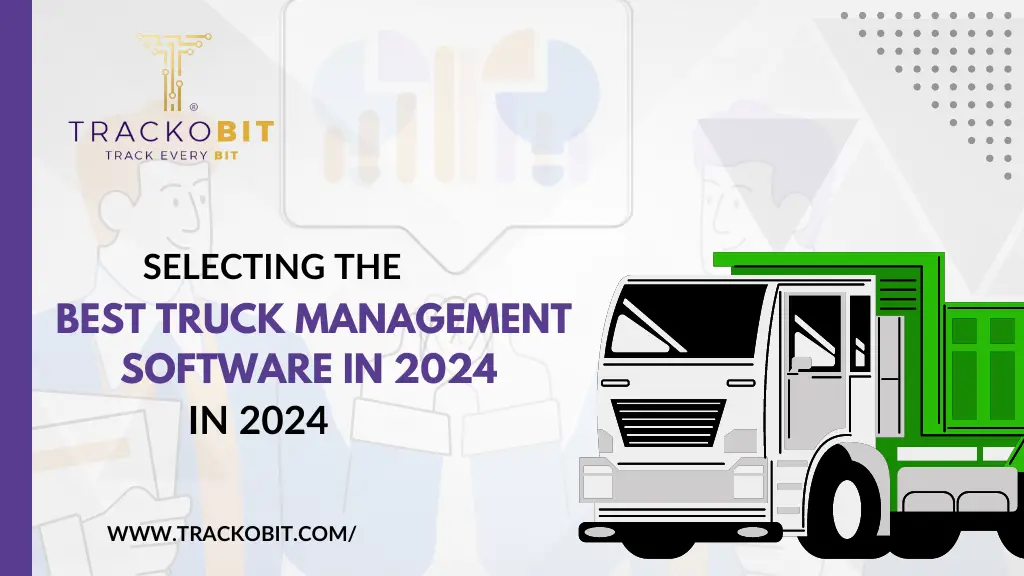The use of Truck Management Software that incorporates traffic, weather, and road conditions into route planning represents a smart integration of technology for optimizing logistics in small businesses, particularly those involved in delivery and transportation.
Also, the concept of using maintenance alerts to avoid vehicle breakdowns is becoming increasingly vital in the logistics and transportation sectors. With the advanced truck tracking fleet software, companies now have the capability to monitor the health of each vehicle in real time, ensuring that maintenance needs are addressed proactively rather than reactively. This approach not only helps in extending the lifespan of the vehicles but also in significantly reducing downtime, which can be costly for businesses that rely heavily on their fleets to meet customer demands.
Key Benefits of Using the Truck Management Solution
- Reduced Downtime: By avoiding unscheduled breakdowns, companies can ensure that their delivery schedules are not disrupted, which is crucial for maintaining customer satisfaction and trust.
- Cost Savings: Regular maintenance can prevent major repairs, which tend to be far more expensive. Additionally, having vehicles run at optimal efficiency reduces fuel costs.
- Compliance: For businesses operating in regions with strict regulations on vehicle emissions and safety, proactive maintenance helps ensure compliance and avoid potential fines.
- Data-Driven Decisions: The insights gained from maintenance and performance data can inform purchasing decisions, such as identifying which vehicle models are most reliable or cost-effective for the company's needs.
- Predictive Maintenance: Utilizing data analytics and machine learning, these systems can predict when a vehicle is likely to need service before a breakdown occurs. By analyzing historical maintenance records and real-time data from vehicle sensors, the software can identify patterns and anomalies that indicate potential issues.
- Automated Scheduling: Once a potential issue is identified, the system can automatically schedule maintenance or alert fleet managers, who can then take action. This automation helps in ensuring that no required maintenance check or repair is overlooked.
- Customizable Alerts: Different truck or vehicles have different maintenance needs. Modern fleet management systems allow for customization of maintenance alerts based on the vehicle make, model, usage, and even driving conditions. This ensures that vehicles are maintained precisely according to their specific needs.
- Integrated Reporting: Truck management software offers comprehensive reporting features that allow fleet managers to see the status of their entire fleet at a glance. Reports can include details on upcoming maintenance, a history of repairs, cost analysis, and predictions on future maintenance needs.
- Remote Monitoring: With the integration of IoT (Internet of Things), it's possible to monitor a truck's condition in real-time. This allows for immediate responses to critical issues and the ability to manage a fleet that's spread over large geographical areas.
For companies like large online retailers, where timely delivery directly impacts customer satisfaction and retention, the importance of advanced maintenance alert systems cannot be overstated. Investing in such technology not only enhances operational efficiency but also supports sustainability by ensuring vehicles consume less fuel and have longer service lives.
Tips to Select the Best Truck Tracking Software in 2024
Undoubtedly, the best Truck Management System can help your truck fleet to operate more efficiently and effectively. Follow these tips to find the best truck fleet solution for your business.
- Assess your fleet's specific needs
- Analyze Operations: Begin by thoroughly reviewing your current fleet operations to identify inefficiencies and areas that could benefit from automation or better management.
- Define Requirements: Determine the specific features you need, such asGPS tracking software, fuel management, route optimization, maintenance scheduling, compliance management, and real-time analytics.
- Consider integration capabilities
- Software Compatibility: Choose software that can seamlessly integrate with your existing systems (HR, accounting, etc.) to avoid data silos and ensure a unified operation.
- Scalability: Opt for a solution that can grow with your business, accommodating an increasing number of vehicles or adapting to new logistic strategies.
- Prioritize user-friendly solutions
- Ease of Use: A simple, intuitive interface ensures quick adoption by your staff, reducing training time and costs.
- Accessibility: Opt for cloud-based solutions that offer access from anywhere, enabling real-time decision-making and updates.
- Evaluate the features
- Advanced Features: Look into the latest technological advancements, such as AI-driven analytics for predictive maintenance and route optimization or IoT for real-time vehicle tracking and diagnostics.
- Customization: The ability to customize the software according to your needs can significantly increase its effectiveness.
- Analyze the total cost of ownership
- Pricing Structure: Understand all costs involved, including setup, monthly or annual subscriptions, and any additional fees for support or extra features.
- ROI Calculation: Estimate the return on investment by considering potential savings in fuel, maintenance, and administrative costs against the software expense.
- Check for compliance and security measures
- Regulatory Compliance: Ensure the software helps you comply with relevant industry regulations and standards to avoid fines and legal issues.
- Data Security: Given the sensitivity of fleet data, robust security features to protect against cyber threats are non-negotiable.
- Look for exceptional customer support
- Ongoing Support: A reliable customer service team that offers prompt and helpful support can significantly impact the implementation process and beyond.
- Training and Resources: Comprehensive training materials and resources for your team can facilitate a smoother transition and quicker mastery of the software.
- Read reviews and ask for references
- Seek reference: Look for reviews to understand how the software has performed for businesses similar to yours.
- Request demos: Before making a decision, request a demo to see the software in action and ensure it meets your expectations.
Final Thoughts
Choosing the right truck management software is a strategic decision that can lead to considerable cost savings, efficiency gains, and enhanced competitive advantage.
By following the tips outlined in this guide and conducting thorough research, you can select the best truck fleet management software such as TrackoBit that not only meets your current needs but also supports future growth and success.





